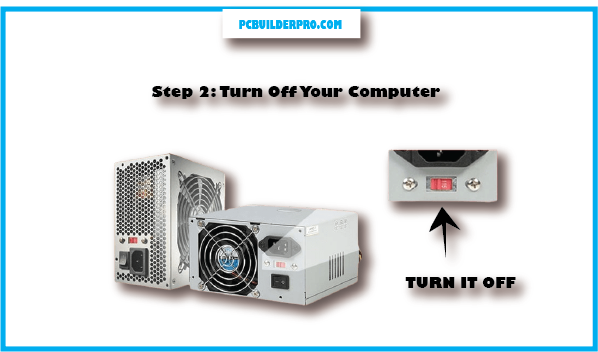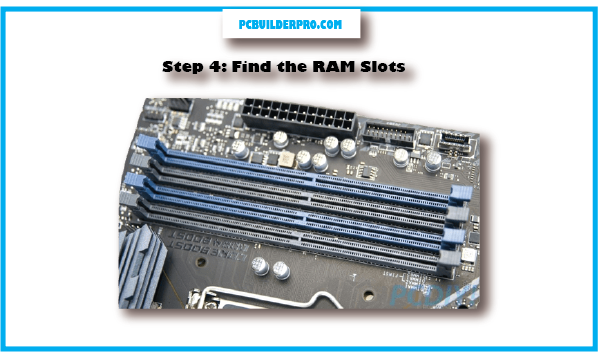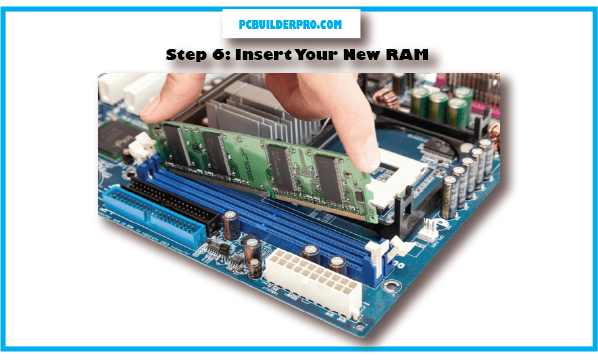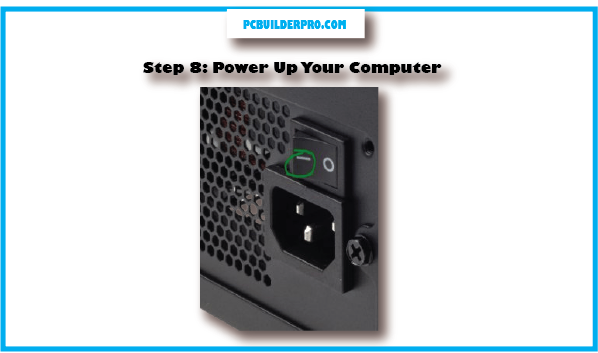Hey there, tech lovers pals! Are you ready to turbocharge your computer’s brain with more RAM? It’s like giving your computer a super duper upgrade! But before you dive into the
world of RAM sticks and computer wizardry, there are a few things you should consider. Let’s break it down in easy peasy terms. Also, we make sure that this is a fully tested
method that you can trust 100% and to be honest, Installing a new RAM in your Computer is not hard so once you do you will do it again and again now let’s Dive into the Process
Things to Consider Before RAM Installation
Before you jump on your RAM adventure, take a look at this table of things to think about. It’ll help you make a smart decision:
| Consideration | What to Think About |
|---|---|
| Compatibility | Check if your computer can handle more RAM. |
| How Much RAM Do You Need? | Think about your computer’s tasks and budget. |
| Type of RAM | Decide between DDR3, DDR4, or DDR5 RAM. |
| Installation Process | Are you going to do it on your own or call in tech support? |
Little example: Think of it like this: not all shoes fit all feet. Your computer has its own shoe size for RAM. Check your computer’s manual or ask a tech-savvy adult to see if it’s RAM-ready.
Things You’ll Need To Install RAM
Before we dive into the RAM upgrade adventure, gather your supplies. You’ll need:

- A screwdriver (ask a grown-up for help)
- Your computer (obviously)
- A new RAM stick (ask a grown-up to get the right one)
- A flat, clean workspace
Step 1: Prepare Your Workspace

Find a comfy spot with lots of space. Make sure you’re on a table, not your bed – you don’t want to drop tiny computer parts into your blankets!
Step 2: Turn Off Your Computer

We don’t want any surprises, right? Shut down your computer and unplug it from the wall. Safety first!
Step 3: Open Your Computer Case

Time to get inside the computer (don’t worry, no tiny gnomes live in there). Grab your screwdriver and open the computer’s case. It’s like peeling the skin off a banana – but less tasty.
Step 4: Find the RAM Slots

Inside, you’ll see a bunch of parts. Look for the RAM slots – they’re like little beds where your RAM sticks will sleep. They usually come in pairs.
Step 5: Remove Old RAM

If there’s old RAM in the slot and you’re upgrading, gently press down on the little clips at each end of the RAM stick. It should pop up like toast. Carefully take it out and set it aside.
Step 6: Insert Your New RAM

Take your shiny new RAM stick (ask a grown-up to help if needed) and carefully line it up with the slot. It only fits in one way, so don’t force it.
When it’s in the right place, press it down until it clicks – like putting a puzzle piece in place.
Step 7: Close Up the Computer

Put the computer case back on and tighten the screws. It’s like putting the banana peel back on – but, again, not as tasty.
Step 8: Power Up Your Computer

Plug your computer back in and turn it on. Voilà! You’ve just given your computer a RAM boost.
Check Your Computer’s New Superpowers
Once your computer is up and running, you can check to see how much RAM you have now. Right-click on the “My Computer” or “This PC” icon and choose “Properties.” Look for the RAM info – you should see the bigger number there.
That’s It, You’re Done!
Congratulations, you’re now a RAM expert! You’ve upgraded your computer like a pro. More RAM means more speed and more fun just like adding extra sprinkles to your ice cream!
What Should I Do With the old RAM sticks I’ve removed?
So, you’ve upgraded your computer’s RAM and are now left wondering, “What in the world do I do with these old RAM sticks?” Fear not, dear tech enthusiast;
we’ve got you covered! And guess what? We’re going to do this with a sprinkle of humor because RAM, like life, should be fun.
Option 1: RAM Reincarnation – Give Them a New Home
Reuse in Another Computer: If you’ve got another computer that’s craving a memory boost, pop those old RAM sticks right in! It’s like hand-me-downs for tech.
You save money and reduce waste. Mother Earth approves!
Option 2: RAM Treasure Hunt – Sell ”em!
Sell Them Online: If your old RAM sticks don’t have a second home in mind, turn them into cash. There’s a bustling market out there with tech enthusiasts hunting for bargains.
Check out online retailers, auction sites, or classified ad websites. Your RAM might just fund your next tech adventure.
Option 3: RAM with Heart – Donate for a Cause
Share the Tech Love: If you’re feeling generous, donate your old RAM sticks to a charity or school. Many organizations are eager to accept used computer equipment.
It’s like giving a little piece of tech magic to those in need. Kudos to you, tech philanthropist!
Option 4: RAM Recycling – Give ‘Em a Green Goodbye
Eco-Friendly Farewell: If none of the above tickles your fancy, recycle those old RAM sticks. It’s a responsible way to say goodbye.
Many electronics stores and recycling centers are happy to take them in. Mother Earth thanks you too!
Issues You Might Encounter After Installing a New RAM & Their Fixes
| Common RAM Installation Issues and Solutions |
|---|
| Issue | Solution |
|---|---|
| The computer freezes or crashes | 1. Check that the new RAM is properly installed, making sure it’s fully inserted and clips are secured. 2. Try booting with the old RAM to test if the new RAM is causing the issue. |
| Computer freezes or crashes | Run a memory diagnostic tool to check for RAM errors. If errors are found, replace the RAM. |
| Blue Screen of Death (BSOD) | Update BIOS or UEFI firmware. If the issue persists, replace the RAM. |
| Performance issues | Enable XMP (Extreme Memory Profile) in BIOS or UEFI to boost RAM performance. Monitor for system stability. |
| Memory errors | Run a memory diagnostic tool to check for RAM errors. If errors are found, replace the RAM. |
Installing new RAM can make your computer faster, but sometimes, things can go wrong. Let’s talk about these problems and how to fix them in super simple terms.
Problem 1: The Computer Won’t Start
Solution: Make sure the new RAM is inside the computer correctly. Imagine it’s like a jigsaw puzzle – it needs to fit perfectly. If it still won’t start, try using your old RAM to check if the new one is causing trouble.
Problem 2: The computer Keeps Crashing
Solution: Sometimes, the new RAM might be bad. Imagine it’s like a broken toy – you need to replace it. Use a tool to check if the RAM has errors. If it does, get a new one.
Problem 3: Blue Screen of Doom (BSOD)
Solution: This one’s serious! If you see a blue screen with sad faces on it, your new RAM might not be friends with your computer. Try updating your computer’s brain (BIOS) – it might help. If not, swap the RAM.
Problem 4: Computer Feels Slow
Solution: After adding new RAM, your computer should feel like it had a good night’s sleep. If it’s still sluggish, think of it like a sports car stuck in traffic.
Try turning on XMP in your computer’s settings to make it go faster. But be careful; too much speed can be a problem, so keep an eye on it.
Problem 5: Memory Errors
Solution: If you see messages about memory problems, your new RAM might be acting up. Use a tool to check if it’s healthy. If it’s sick, you know what to do – replace it.
Please Remember, if none of these simple fixes work, contact the RAM maker for help. They’re the pros! And here are some extra tips:
- Check if the new RAM works with your computer on the maker’s website.
- Try putting the new RAM in different slots.
- Make sure your computer’s brain (BIOS) is up to date.
- Turn off any fancy speed settings.
- Reset your computer’s settings to default.
- Test the RAM in another computer to see if it’s okay.
If everything fails, it’s time to say goodbye to that RAM and get a new buddy for your computer. Happy computing! 🚀💾
How Do I know if I Need to upgrade my computer’s RAM
Random Access Memory (RAM) might sound like a fancy tech term, but it’s just your computer’s way of remembering stuff while it’s working.
Imagine it as a super-fast Post-it note collection for your computer, and the more Post-its it can handle, the better it works.
But how do you know if your computer needs more RAM? Don’t worry; we’re here to make it easy, fun, and a tad humorous!
Signs That Your Computer Need RAM
Slow Performance (The Turtle Effect): If your computer’s acting like a sloth on a hot summer day, especially when you open a bunch of programs,
it could be begging for more RAM. It’s like making a sandwich with just one slice of bread—it’s not very satisfying.
Frequent Crashes (The Drama Queen): If your computer throws tantrums and crashes more often than a clumsy toddler learning to walk, it might be RAM time.
RAM helps your computer handle tasks gracefully, like a ninja cat landing on its feet.
Low Memory Error Messages (The Forgetful Reminder): Ever seen those pop-up messages saying “low memory” or “out of memory”?
It’s like your computer’s way of saying, “Hey, I’m running on fumes here!” Time to fuel up with more RAM.
Struggles with Certain Programs (The Weightlifter): Some programs, like games and video editors, are like heavyweight champions in the computer world.
If your computer is sweating bullets just trying to run them, it’s probably time to pump up its RAM muscles.
Checking Your Current RAM
Now, to be sure you need more RAM, you’ll have to play detective:
- Step 1: Open your computer’s settings or use a fancy tool to see how much RAM you have right now.
- Step 2: Look up the RAM requirements of the programs you use. Are they greedy for RAM, or are they happy with what you’ve got?
If you find that your computer is starving in a RAM-hungry world, it’s time to consider an upgrade.
Upgrading RAM – The Quest for More Power
But before you go all “RAM-hungry,” here are some tips to make sure your upgrade goes smoothly:
Compatibility Matters: Your new RAM needs to be pals with your computer’s motherboard. Check your motherboard’s compatibility on the manufacturer’s website.
Choose a Trusty Brand: Don’t go for RAM from the back of a sketchy tech van. Stick to reputable brands like you would with a trustworthy pizza place.
When in Doubt, Call for Backup: If you’re not feeling confident, call in a tech-savvy friend or a professional. It’s better than turning your computer into a RAM salad.
Well, Upgrading your computer’s RAM can give it a boost like a double espresso in the morning.
So, if your computer’s been acting sluggish or throwing a fit, consider a RAM upgrade, and watch it zip back to life!
Is adding more RAM going to make my computer faster?
Imagine your computer is like a desk, and the RAM is the space on it. The more space you have, the more things you can do at once without making a mess. Adding more RAM is like
getting a bigger desk, so yes, it can make your computer faster because it has more room to work on things.
But if your desk is already big enough for what you do, making it bigger won’t help much.
How much RAM do I even need?
Think about what you do on your computer. If you’re just writing documents or browsing the internet, 8GB of RAM is like having a small desk, which is fine. But if you’re making
videos or playing big games, you’ll want a bigger desk, like 16GB or 32GB of RAM, so you can spread out all your stuff and work more comfortably.
How do I find out what type of RAM is compatible with my computer?
To find the right RAM, it’s like finding the right accessories for your desk. You can look in the desk’s manual, check the desk maker’s website, or use a tool that tells you what fits best on your desk.
What tools will I need to install RAM?
You don’t need a full toolbox, just maybe a small screwdriver to help open the case where your desk is.
Do I need to turn off my computer before opening it?
Definitely! It’s like unplugging a lamp before fixing it. You don’t want to get zapped!
Is it safe to touch the inside of my computer?
Yes, but be careful, like when you’re moving things around on your desk. Touch something metal on the case first, so you don’t get a static shock.
How do I locate the RAM slots on my motherboard?
The RAM slots are like the drawers on your desk where you put papers. They’re usually near the center of the desk. If you’re not sure, the desk’s manual will show you where they are.
What are the latches on the RAM slots for?
The latches are like the locks on the drawers. They keep your papers from flying out. You open them to put new papers in or take old ones out.
How can I tell which way the RAM should be inserted?
RAM sticks are like special papers that only fit in the drawer one way. There’s a little cut that shows you how to put it in right, so it sits nicely in the drawer.
Do I need to use a lot of force to push the RAM into the slots?
No, you shouldn’t have to push hard. It’s like closing a drawer; you just need to push it firmly until it clicks into place.
What should I do if the RAM doesn’t click into place?
If your RAM feels like a puzzle piece that won’t fit, don’t force it. Check the notches on the RAM stick and the slot on your motherboard to make sure they line up. The latches should
be wide open like a crocodile’s mouth waiting for food. If you’ve tried gently and it still won’t settle in, it could be the wrong type or damaged.
Can I install multiple RAM sticks at once?
Absolutely! It’s like adding more chairs around your table for friends. If your motherboard has the space, you can add more RAM sticks. For example, if you want 16GB of RAM, you
can put two 8GB sticks together.
If I have multiple RAM slots, does the order I install them matter?
Sometimes it does. It’s like seating guests at a dinner party; there’s the best spot for everyone. Your motherboard might like RAM sticks in certain slots first to perform better.
It’s a good idea to peek at the motherboard’s manual to see where it suggests putting them.
Do I need to install any drivers after adding RAM?
Nope, no drivers needed. Your computer is smart enough to recognize the new RAM without extra help.
How can I check if my computer recognizes the new RAM?
To see if your computer knows about the new RAM, you can sneak a peek at its BIOS or system information. It’s like checking if your friend arrived at the party.
The steps to do this can vary, so you might need to look up how to do it for your specific computer.
What should I do if my computer won’t boot up after installing RAM?
If your computer acts like it’s taking a nap and won’t wake up, make sure the RAM is tucked in snugly. Use RAM that gets along with your motherboard. If you’ve invited many RAM
sticks, try taking one out to see if the others will play nicely. If it’s still sleepy, you might need to ask a computer doctor for help or look at the manual for clues.
Is it okay to just leave my computer case open after installing RAM?
Leaving your computer’s case open is like leaving your house’s door open. It invites dust and other unwanted guests. Once you know everything is working fine, close it up to keep it safe.
What are some common mistakes people make when installing RAM?
Some folks get too excited and start without turning off their computer, which is a big no-no. Others try to fit RAM that doesn’t match their motherboard, or they push too hard and
don’t align the notches right, which can lead to trouble.
What happens if I accidentally damage the RAM while installing it?
If you hurt the RAM, it might get grumpy and not work, or it could even throw a tantrum and harm your computer.
If you think the RAM is hurt, it’s better to get a new one than to risk more problems.
Should I take my computer to a professional if I’m not comfortable installing RAM myself?
If you’re feeling nervous like it’s your first time on a roller coaster, it’s okay to ask for help. Take your computer to someone who knows the ride well,
like a trusted technician, and they can install the RAM for you.
Conclusion
And there you have it, installing RAM on your PC is as easy as playing with building blocks. Just remember to be gentle, and don’t rush. Your computer will thank you for
running faster and smoother. So, the next time someone asks you, “How do you install RAM on a PC?” you can proudly say, “Easy peasy, lemon squeezy!”
Now go out there and give your computer the brainpower it deserves. Happy computing!
FAQs
What is RAM, and why do I need to install it on my computer?
RAM stands for Random Access Memory, and it’s like your computer’s short-term memory. It helps your computer run faster by allowing it to work on more things at once. Installing more RAM can make your computer quicker and more efficient.
How do I choose the right RAM for my computer?
Check your computer’s manual or ask an expert for guidance. Make sure to get RAM sticks that are compatible with your computer’s model and have the right size and speed.
Can I install RAM without any special tools?
Yes, you can! All you need is a regular screwdriver to open your computer’s case. No fancy tools are required.
Is it safe to install RAM on my computer?
Yes, it’s safe as long as you follow the steps carefully. Make sure your computer is turned off and unplugged before you start to avoid any accidents.
How do I know if my computer already has RAM installed?
You can check your computer’s settings to see how much RAM is currently installed. Look for “System Information” or a similar option in your computer’s menu.
Can I mix different brands or sizes of RAM sticks?
It’s best to use RAM sticks that are the same brand, size, and speed to avoid compatibility issues. Mixing them might work, but it can sometimes cause problems.
Do I need to install RAM in pairs (dual-channel) for it to work correctly?
It’s not always necessary, but some computers benefit from dual-channel RAM configurations. Check your computer’s manual to see if it recommends using RAM in pairs.
What if I encounter problems after installing RAM?
If your computer doesn’t start or you face issues, double-check that you’ve installed the RAM correctly. If problems persist, consult with a knowledgeable friend or a professional for assistance.
Will installing more RAM make my computer run games faster?
Yes, installing more RAM can help your computer run games and other applications faster, especially if your computer previously had limited RAM. However, other factors like your graphics card also play a role in gaming performance.

![How To Install RAM on a PC? 1 How To Install RAM on a PC? [A Beginner’s Guide]](https://custompcadvisor.com/wp-content/uploads/2023/10/How-To-Install-RAM-on-a-PC-min.png)